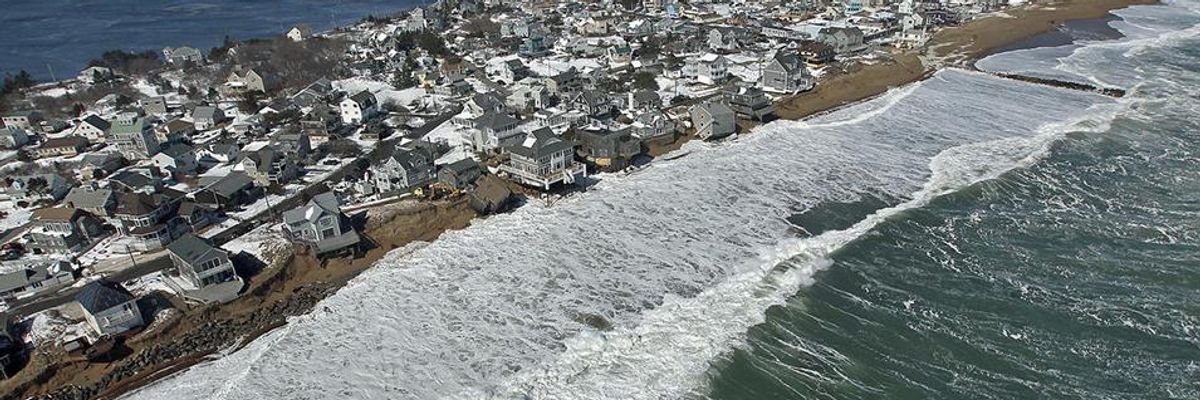The latest news on rising sea levels can be described as another example of human folly. The Anthropocene has seen plant extinctions, animal extinctions, both at an unforeseen pace, and now there is not only worsened coastal flooding but a vast area of low-lying south-eastern United States eventually could be underwater. Who says so? And with what level of confidence can we make such a prediction?
An assessment by 106 specialists, who study sea-levels and were selected on the basis of peer-reviewed published research, projects a meter rise by century's end. Earlier, in September 2019, the UN Intergovernmental Panel on Climate Change (IPCC) issued a report estimating, with statistical confidence levels, a global mean sea level rise of 0.3 to 1.1 meters by 2100. Present sea levels are already about a foot higher than in the 1970s, and coastal communities are experiencing chronic flooding that is worsened by storm surges and extreme rainfall events -- now more frequent due to climate change.
If global warming remains within 2 degrees Celsius, the experts estimate a sea-level rise limited to an average 0.5 meters by 2100 and to between 0.54 -- 2.15m by 2300. This is the scenario resulting from the Paris Agreement. However, Donald Trump representing a country that is one of the major contributors to climate warming has already withdrawn from the Paris accord.
The earth's average surface temperature has risen by 1C since the preindustrial era but the trajectory uncontrolled is expected to lead to another 3.5C rise by 2100. This predicts a 0.63 -- 1.32m sea-level rise by 2100. But by 2300, this scenario also means a possible 1.8m increase from melting Greenland and Antarctic ice sheets as noted by the experts with knowledge of this aspect of climate change. The resulting total rise by 2300 is then estimated at 1.67 - 5.61m. To those of us used to thinking in terms of the English system, the last figure amounts to 18ft. 5ins.
Consider that some 10 percent of the world's population or about 770 million people live on land less than 5m above high tide levels. Consider also that the scenarios above are based on mean sea levels. It implies there are areas with lower seas -- the lucky coastal areas -- but also the unfortunates living beside higher seas in low-lying regions. Hence, the unfortunate southeast of the US.
If the figures quoted previously are not scary enough, it is worth noting what happened during the melting of the Eurasian ice sheet 14,000 years ago -- it raised sea levels by 8 meters or 26 1/4 feet. All of which leads once again to the question of what we can do as individuals to alleviate global warming in the age of Trump, a man who believes climate change is a hoax. Thanks to him making an ass of himself during his coronavirus news conferences, there is a chance he may not be around.
As individuals, aside from avoiding unnecessary auto trips and walking short distances, one of the best things we can do is to eat less beef (lamb is even worse, pork much less). As ruminants, cows emit gases, mostly methane when chewing their cud and then also from the other end -- although there is now hope for a vaccine that can inactivate the digestive bacteria causing it. Methane is 25 times more potent than carbon dioxide in trapping heat. It is why livestock cause 14 percent of greenhouse gas emissions resulting from human activity. It is said, if cows were a country, they would rank third in emissions.
On the positive side, replacing meat with poultry, fish, vegetables and fruit -- the Mediterranean diet -- helps us live longer, healthier lives. So, what do we have to lose?
